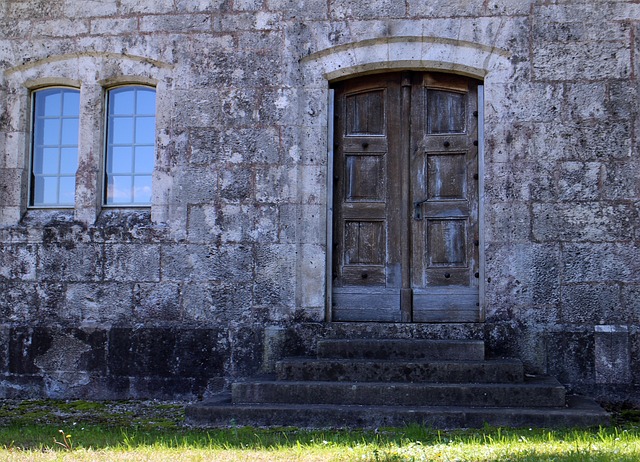Insulated doors significantly reduce heat loss in homes and buildings through advanced sealing technologies, weatherstripping, and door sweeps, leading to energy savings. High-quality door hardware, including robust sealing mechanisms and durable materials, maintains insulation effectiveness over time. Strategically using these features, especially in exterior entry points and extreme climates, optimizes indoor comfort and minimizes energy wastage, making insulated doors a beneficial investment for residential and commercial properties.
In today’s quest for energy efficiency, minimizing heat loss through gaps in doors has become paramount. Understanding how even small openings can lead to significant temperature regulation issues, this article delves into the critical role of insulated doors and the essential contribution of high-quality door hardware in achieving optimal energy conservation. By exploring key features, types, and benefits of such hardware, we uncover practical solutions for enhanced home and building insulation.
Understanding Heat Loss Through Gaps in Doors
Doors, often overlooked, can be a significant source of heat loss in any home or building. This is especially true for older or poorly sealed doors, where gaps and cracks around the door frame allow warm air to escape and cold air to enter, leading to inefficient energy use. Understanding these heat loss pathways is crucial when considering the installation of high-quality door hardware designed to mitigate this issue.
Insulated doors are an effective solution to combat this problem. By creating a seamless seal around the door, these doors significantly reduce heat transfer through gaps. Advanced technologies like weatherstripping and specialized door sweeps help fill any small openings, ensuring that warm air remains inside during winter and cold air doesn’t seep in during summer, thereby enhancing energy efficiency and comfort.
The Role of Insulated Doors in Energy Efficiency
Insulated doors play a pivotal role in enhancing energy efficiency within any structure, particularly in colder climates. By incorporating high-quality door hardware designed to prevent heat loss through gaps, these doors significantly reduce energy expenditure and improve overall comfort. The insulation acts as a barrier, mitigating the escape of warm air and maintaining optimal indoor temperatures, thereby decreasing the workload on heating systems.
This dual benefit of retaining warmth and minimizing energy usage is particularly notable in residential and commercial buildings alike. With the right door hardware, insulated doors can contribute to more sustainable practices, offering long-term savings on utility bills while also promoting environmental responsibility.
Key Features of High-Quality Door Hardware
High-quality door hardware plays a pivotal role in ensuring insulated doors maintain their energy efficiency and performance over time. Key features to look for include robust sealing mechanisms that fill gaps, preventing heat loss during winter and keeping out unwelcome intruders during summer. Advanced materials like stainless steel and nickel plating ensure durability against corrosion and wear, preserving the hardware’s functionality in various climates.
Additionally, innovative designs incorporate weather-sealing technologies, such as flexible rubber gaskets or magnetic strips, to create a tight seal around door frames. These features not only optimize insulation but also enhance overall door performance, contributing to reduced energy bills and improved indoor comfort.
Types of Door Hardware for Maximum Insulation
When it comes to insulating your home and keeping heat loss at bay, door hardware plays a surprising yet significant role. The right components can prevent cold air from seeping in through gaps around doors, ensuring your insulated doors remain effective.
There are various types of door hardware designed with insulation in mind. Weatherstripping is a common solution, fitting tightly against the door frame and sealing any gaps. This simple yet effective measure keeps cold air out and warm air in. Additionally, high-quality door sweeps at the bottom of exterior doors help to block drafts, while adjustable hinges can ensure proper sealing for better insulation. These combined efforts contribute to creating an airtight seal around your insulated doors, enhancing energy efficiency and comfort year-round.
Benefits and Applications of Insulated Doors with Quality Hardware
Insulated doors equipped with high-quality hardware offer a multitude of benefits, significantly enhancing energy efficiency and overall home comfort. By creating an airtight seal, these doors prevent heat loss during colder months and keep indoor temperatures cool in warmer seasons. This not only reduces energy consumption but also contributes to cost savings on utility bills.
Applications of insulated doors with quality hardware are vast. They are ideal for exterior entry points, providing a robust barrier against weather elements while ensuring a comfortable living environment. Additionally, they can be utilized in commercial spaces, such as offices and warehouses, to maintain optimal temperature control and minimize energy wastage. The installation of these doors is particularly beneficial for regions with extreme climates, where efficient temperature regulation is paramount.
High-quality door hardware, designed to prevent heat loss through gaps in doors, plays a crucial role in enhancing energy efficiency. By investing in insulated doors equipped with top-tier hardware, homeowners and businesses alike can significantly reduce energy consumption, lower heating costs, and contribute to a more sustainable future. The benefits of these advanced solutions are clear: improved insulation, reduced carbon footprint, and increased comfort levels. So, when it comes to optimizing your living or working space, consider the power of high-quality door hardware in promoting insulated doors—a smart choice for both pockets and the planet.
